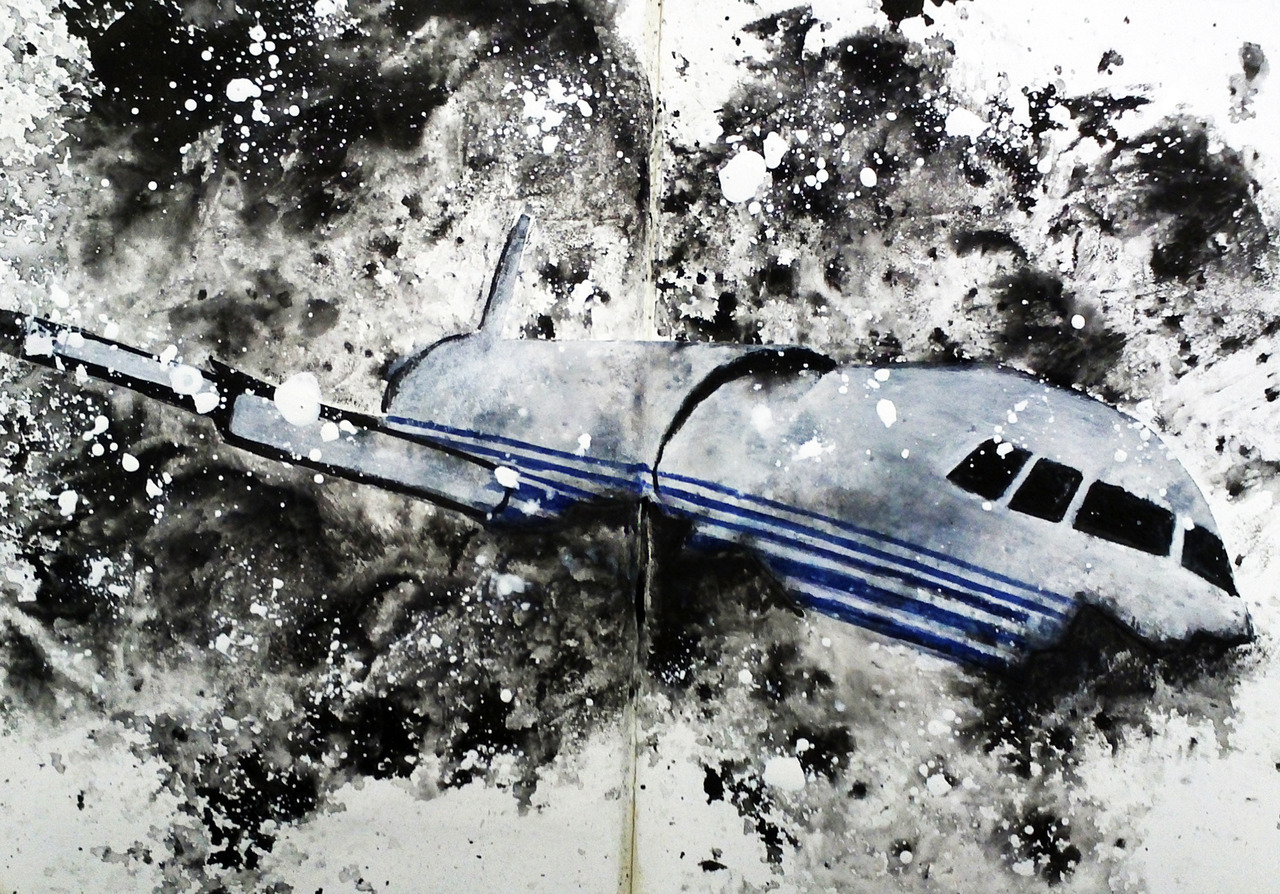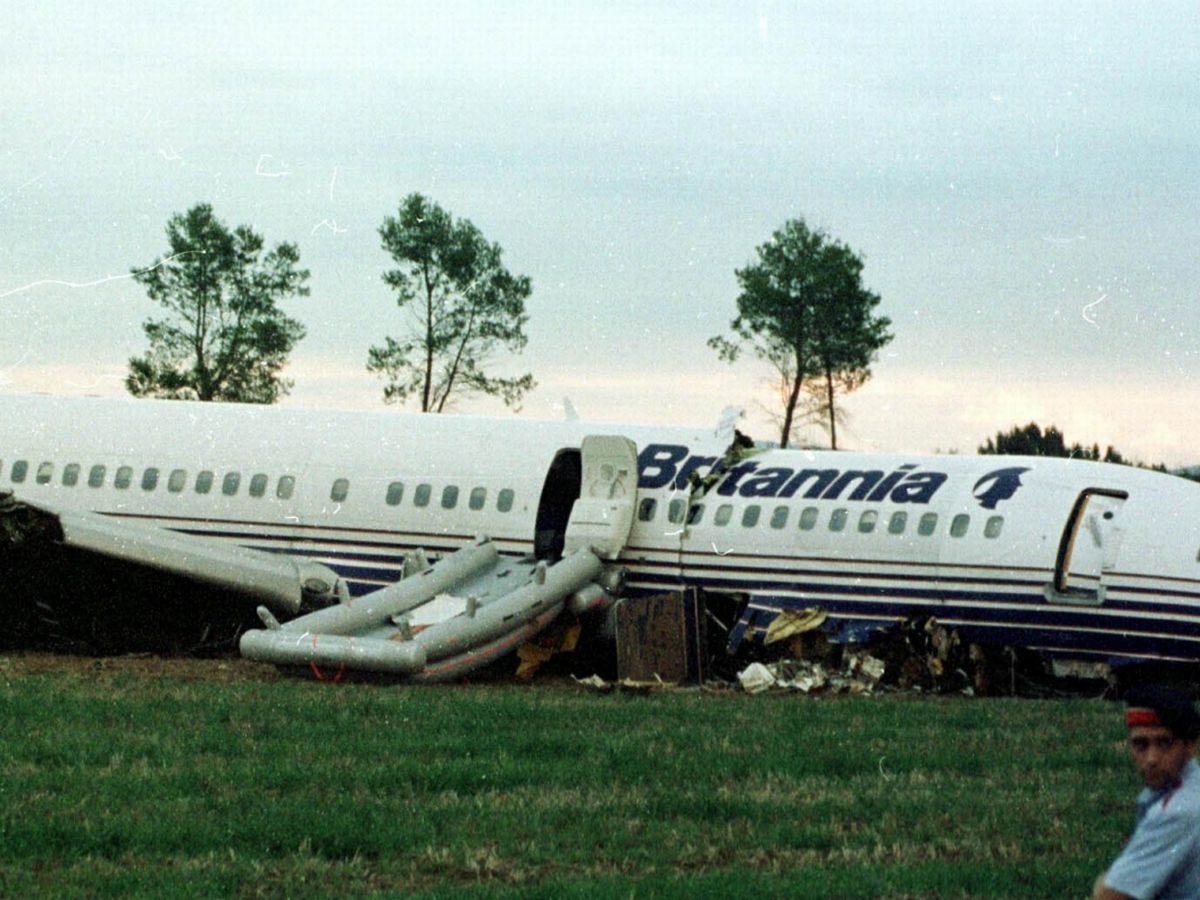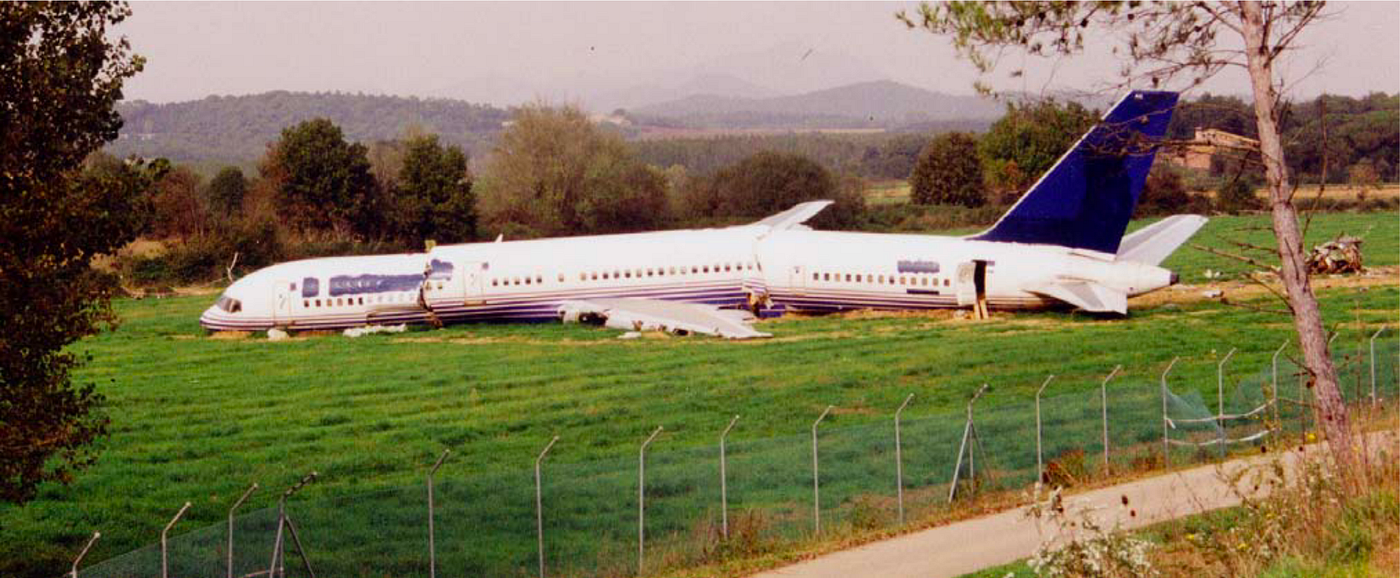
The night of September 14, 1999, began like any other for passengers aboard Britannia Airways Flight 226 Alpha, but the journey to Girona Airport in Spain would soon take a disastrous turn. This was not simply a case of inclement weather or an unavoidable accident—it was a tragic and preventable chain of events that would leave 44 passengers injured and create one of the most complex and improbable aviation incidents in recent history.
What was so shocking about this event was the number of failures—each seemingly minor on its own—that compounded and led to one of the most harrowing moments of that year. The lesson learned from this accident echoes the importance of meticulous attention to every single detail in aviation, from equipment maintenance to pilot protocols.
The flight departed Cardiff, Wales, with 236 passengers and 9 crew members, bound for Spain's Girona Airport. As the plane made its way south, the crew monitored the weather conditions, which, unbeknownst to them, were about to pose a serious challenge. Girona, known for its foggy weather, was experiencing thunderstorms that evening.
As they approached the airport, the crew was aware of the difficult weather conditions but still believed that a safe landing was possible. However, what they didn't know was that a series of factors—including faulty equipment, a complex approach, and increasing pressure from air traffic control—would lead to a disastrous crash landing.
The pilot of the Boeing 757, Captain Joachim Gustafsen, was highly experienced, with 17,000 hours of flying time, including several thousand hours on the 757. His first officer, however, was comparatively inexperienced with just under 1,500 hours of flying time. As the aircraft neared Girona, the pilots began their descent into the stormy weather.

The first officer initiated the approach with the captain’s approval. Given the turbulent weather, they opted for an approach to Runway 02, an older method that would require increased attention due to the runway’s lack of an Instrument Landing System (ILS).
The problems began early in the approach when the captain deployed the speed brakes to help descend faster. In a moment of oversight, the captain forgot to retract them for 14 minutes, which consumed valuable fuel and increased the aircraft's fuel burn.
Compounding this issue, the approach became more challenging as the turbulence intensified. The crew found it increasingly difficult to maintain control of the aircraft as their instruments became disoriented by the storm. To make matters worse, as the aircraft descended further, the captain lost his approach charts and had to rely on his first officer to call out speeds and altitudes.
By the time they were close to landing, the weather conditions had worsened, and the controller notified the crew of wind changes. The captain, realizing that the aircraft was no longer aligned with the runway, made the decision to go around and attempt a second landing in the opposite direction. However, this decision led to further complications.
The pilots' focus shifted to their fuel situation, and they knew they were dangerously low, which added pressure to make a successful landing. The second approach, conducted under immense stress and with little time for proper preparation, was flawed from the start.

As the plane approached the runway, the pilots became increasingly disoriented. The visibility was minimal, and they were unable to clearly see the runway until the very last moment. Just 30 seconds from touchdown, the ground proximity warning went off, signaling a dangerous descent.
The aircraft slammed onto the runway nose first, bouncing back into the air. This sudden impact caused severe damage to the aircraft, including a complete loss of electrical power, and the plane continued to slide uncontrollably down the runway.
In a cruel twist of fate, the plane's nose wheel assembly crashed into the lower fuselage, causing the electrical cables that controlled the engine throttles to snap. This led to the engines revving up uncontrollably, making the situation even worse. The aircraft continued to slide off the runway, eventually smashing into a small hill, breaking into three pieces, and coming to a halt in a field.
Miraculously, most of the passengers survived, but 44 people were injured. The crash was not immediately recognized by air traffic control, and it took several minutes before the first responders reached the wreckage. Despite the severity of the accident, the crew’s quick response helped save many lives, but it was clear that this disaster was the result of a series of avoidable mistakes.

The investigation into the crash revealed a number of critical findings, including poor weather-related decisions, poor maintenance practices, and failures in communication and preparation. The airport’s inadequate lighting systems and outdated taxiway signs contributed significantly to the confusion, making it difficult for the crew to navigate. Additionally, the use of the outdated ground radar system—sitting unused at the airport for years—further complicated the situation.
The incident was a wake-up call for the aviation industry. It led to major changes in both airport safety protocols and training requirements for flight crews. Recommendations included the redesign of the aircraft’s nose gear housing and the installation of improved radar systems.
The tragedy also highlighted the need for more comprehensive training for pilots and air traffic controllers when dealing with inclement weather and low-visibility conditions. More stringent regulations were introduced to ensure that similar accidents would be less likely to occur.
The Linate Airport crash serves as a tragic reminder that aviation accidents are rarely caused by a single event. Rather, they are often the result of multiple failures, each of which escalates the situation further. By learning from this disaster, the aviation industry took significant steps to improve safety and prevent future incidents. Despite the many lives lost that day, the legacy of Flight 226 Alpha is a renewed commitment to safety that continues to shape aviation practices today.



-1751811138-q80.webp)